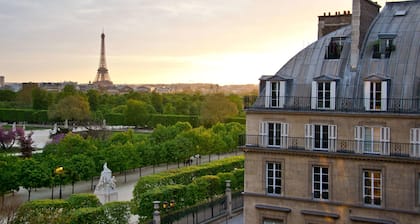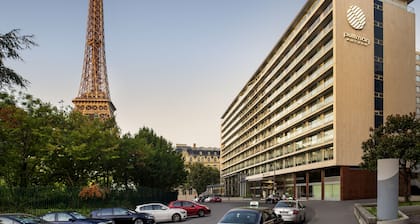Inspect the architectural and artistic beauty of the Arc du Triomphe du Carrousel. This monumental arch stands between the beautiful Tuileries Garden and the Louvre Museum. Napoleon Bonaparte commissioned the Arc du Triomphe du Carrousel in 1806 and it took 2 years to build. It is one of a collection of ostentatious landmarks ordered by Napoleon to celebrate the military successes of France.
The acclaimed architectural team Percier and Fontaine was responsible for designing the arch. It measures 63 feet (19 meters) in height and 75 feet (23 meters) in width. Despite this commanding size, the arch is about half the size of the more famous Arc de Triomphe de l’Étoile. Together with its larger counterpart, the arch forms part of the Voie Triomphale (Triumphal Way), a historical axis of monuments that follows the course of the sun on the right bank of the Seine River in Paris.
Admire the Corinthian style, complete with one large and two small archways in addition to interior archways. Decorating the front and rear façade is a series of granite columns, each topped by a statue of a Napoleonic soldier. The columns were originally located at the former royal palace, Château de Meudon.
Inspect the bas-reliefs created by well-known French sculptors such as Jean-Joseph Espercieux and Louis-Pierre Deseine. They portray significant events in the military history of Napoleon, including the Battle of Austerlitz and the signing of the Peace of Pressburg. Crowning the arch is a statue of a four-horse chariot ridden by a figure depicting Peace. Flanking the chariot are gilded statues symbolizing Victory.
Get to the arch by taking the metro to the Palais Royal Musée du Louvre and Tuileries stations and walking for a few minutes. Public buses stop at the adjacent Place du Carrousel.
Include a visit to the Arc du Triomphe du Carrousel while exploring the many attractions in the 1st arrondissement of Paris. Scrutinize Leonardo da Vinci’s Mona Lisa, among other masterpieces, at the Louvre Museum. Relax with a picnic on the beautiful lawns of Tuileries Garden and see water lily paintings by Claude Monet at the Orangerie Museum.













